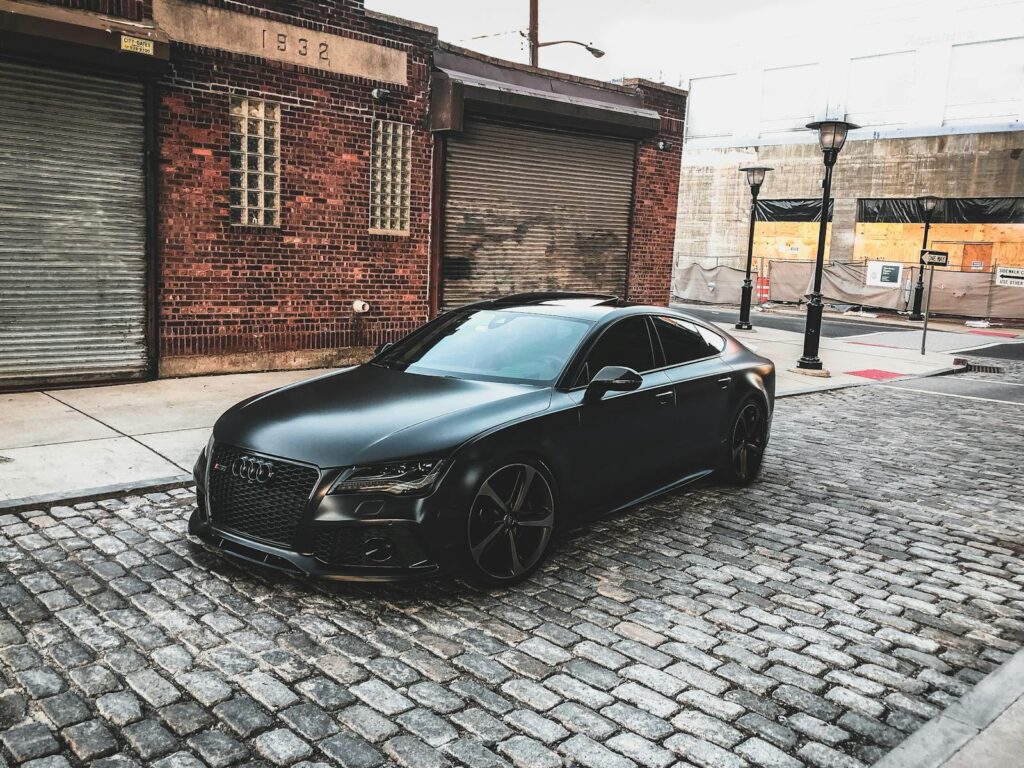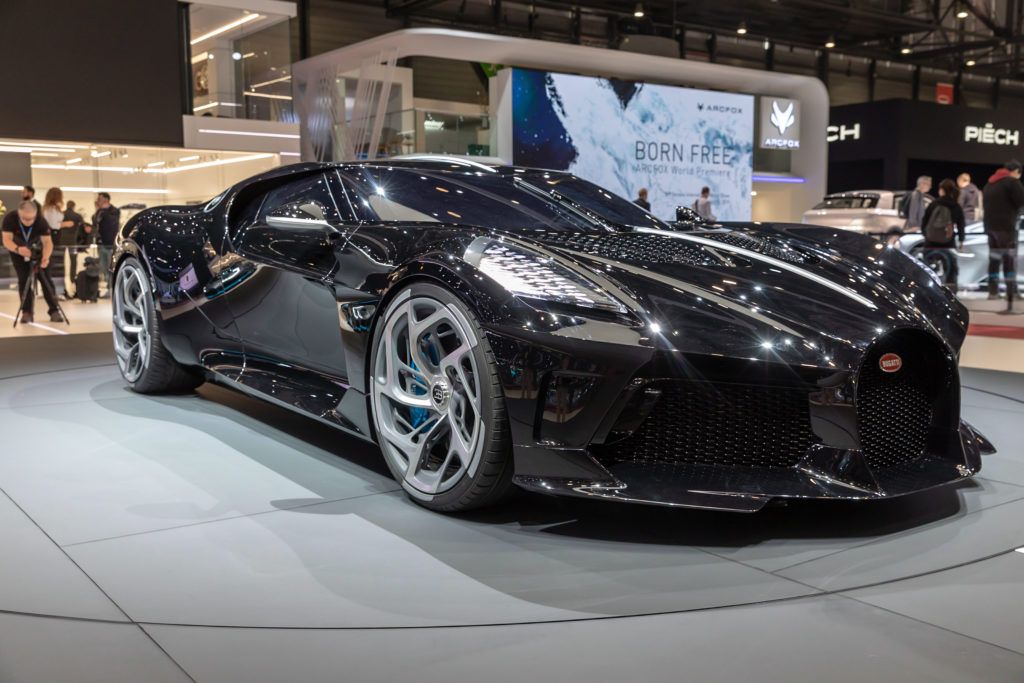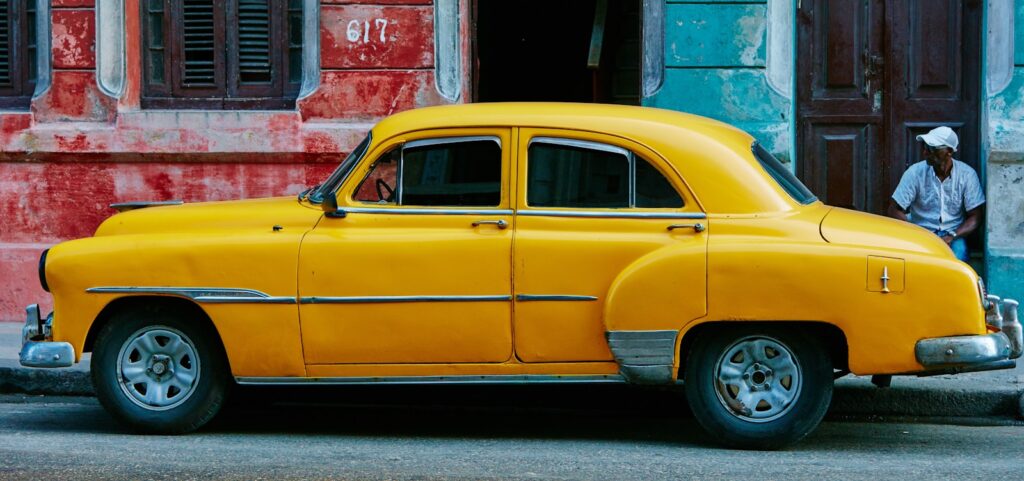
Ah, the 1990s! A truly golden era, back when Nickelodeon cartoons actually delivered genuine laughs and those infamous Furbies kept their chattering going long after you’d optimistically removed their batteries. For car enthusiasts, it was a profound moment, a time when automotive culture felt purely organic, brimming with a grassroots enthusiasm that hadn’t yet been fully co-opted, stylized, and then repackaged by the slick machinery of Hollywood blockbusters and high-octane video game franchises. It was a decade where passion for driving and engineering prowess shone brightest.
What makes these ’90s machines truly remarkable is their unpredictable ascent into the realm of high-value collectibles. Some of these cars were within reach for many, while others remained aspirational dreams, glimpsed in glossy magazine spreads at the grocery store or Waldenbooks. Few could have ever foreseen their incredible trajectory, yet the very media that initially borrowed from car culture ironically helped amplify it, transforming these fun weekend cars into bona fide six-figure status symbols and global icons.
Driven by a potent cocktail of rising demand, strictly limited production runs, and a powerful tidal wave of nostalgia, these heroes of the ’90s have surged in both real-world value and cultural cachet. To identify these automotive goldmines, we’ve donned our financial spectacles, meticulously analyzing market data from top auction houses like Bring a Trailer and Mecum, consulting collector platforms, and reviewing classic car indexes to track genuine, consistent appreciation. This isn’t just a list of cool old cars; these are machines that have earned their place in the modern collector market, proving their enduring relevance and undeniable worth. Let’s delve into the first wave of these incredible appreciating assets.
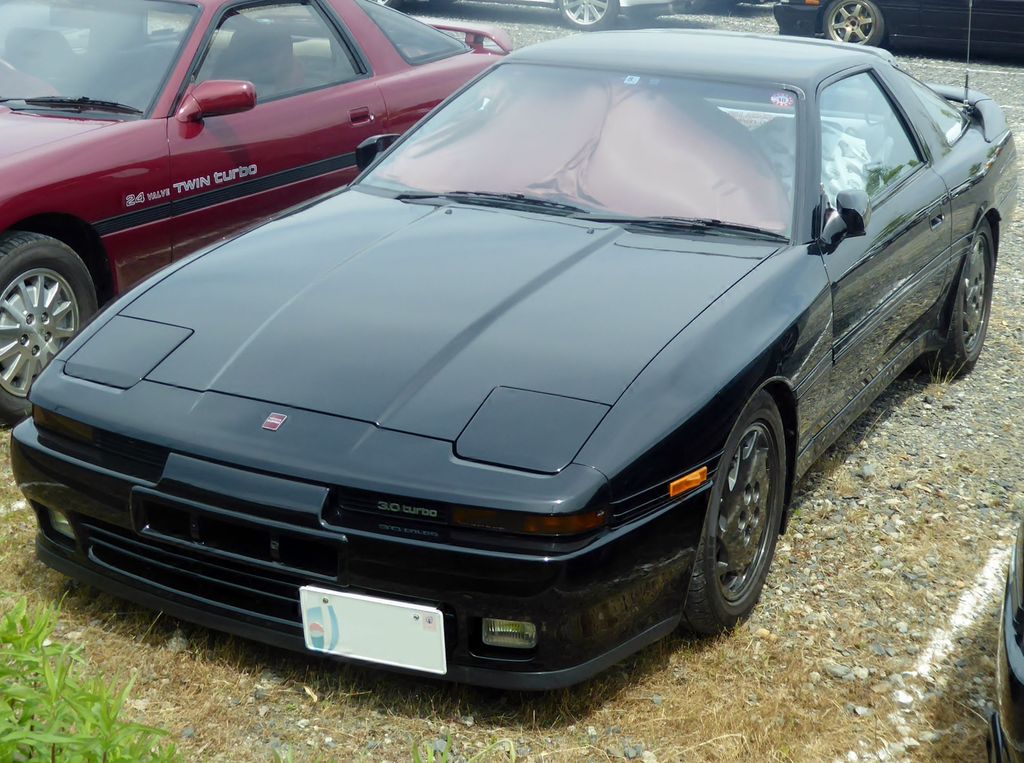
1. **Toyota Supra Turbo**If there’s one car that perfectly encapsulates the meteoric rise of ’90s Japanese performance legends, it’s undeniably the fourth-generation Toyota Supra. This twin-turbo beast, known internally as the A80, has rocketed from being just a cool, fast Japanese car to an absolute benchmark in the collector world, with its values appreciating faster than a lottery winner’s most extravagant whims. It truly defines an era.
At its heart lay the nearly indestructible 2JZ-GTE twin-turbo inline-six engine, a mechanical marvel renowned for its capability to achieve mind-boggling horsepower figures with even basic modifications. Its sleek, muscular design was instantly recognizable, helping to define the very essence of Japanese performance during the decade. Low original production numbers, particularly for examples maintained in pristine factory condition, have only compounded its rarity and allure.
Global interest in the Supra surged after strong showings at major auctions, with enthusiasts still recalling that internet-breaking Barrett-Jackson sale. Crucially, renewed attention from a certain street racing movie franchise has further cemented its legendary status, driving up demand. Today, clean, factory-stock examples consistently command six-figure prices, and there are, frankly, no signs of this incredible ascent slowing down. It’s worth noting that factory-stock six-speed manual models fetch the highest premiums, so be sure to avoid those heavily modified “ricers” if you’re looking for genuine collector value. Estimated collector value: $90,000 to over $180,000, depending on mileage, originality, and trim.
Car Model Information: 1995 Toyota Supra SZ
Name: Toyota Supra
Caption: Toyota GR Supra (J29/DB)
Manufacturer: Toyota
Aka: unbulleted list
Production: unbulleted list
Class: Sports car
BodyStyle: fastback,coupé
Layout: Front-engine, rear-wheel-drive layout
Predecessor: Toyota Celica (A20)
Categories: 1980s cars, 1990s cars, 2000s cars, 2010s cars, 2020s cars
Summary: The Toyota Supra (Japanese: トヨタ・スープラ, Hepburn: Toyota Sūpura) is a sports car and grand tourer manufactured and developed by the Toyota Motor Corporation beginning in 1978. The name “supra” is a definition from the Latin prefix, meaning “above”, “to surpass” or “go beyond”.
The initial four generations of the Supra were produced from 1978 to 2002. The fifth generation has been produced since March 2019 and later went on sale in May 2019. The styling of the original Supra was derived from the Toyota Celica, but it was longer. Starting in mid-1986, the A70 Supra became a separate model from the Celica. In turn, Toyota also stopped using the prefix Celica and named the car Supra. Owing to the similarity and past of the Celica’s name, it is frequently mistaken for the Supra, and vice versa. The first, second and third generations of the Supra were assembled at the Tahara plant in Tahara, Aichi, while the fourth generation was assembled at the Motomachi plant in Toyota City. The 5th generation of the Supra is assembled alongside the G29 BMW Z4 in Graz, Austria by Magna Steyr.
The Supra traces much of its roots back to the 2000GT owing to an inline-6 layout. The first three generations were offered with a direct descendant to the Crown’s and 2000GT’s M engine. Interior aspects were also similar, as was the chassis code “A”. Along with this name, Toyota also included its own logo for the Supra. It was derived from the original Celica logo, being blue instead of orange. This logo was used until January 1986, when the A70 Supra was introduced. The new logo was similar in size, with orange writing on a red background, but without the dragon design. That logo, in turn, was on Supras until 1991 when Toyota switched to its current oval company logo. The dragon logo was a Celica logo regardless of what colour it was. It appeared on the first two generations of the Supra because they were officially Toyota Celicas. The dragon logo was used for the Celica line until it was also discontinued.
In 1998, Toyota ceased sales of the fourth-generation Supra in the United States. Production of the fourth-generation Supra for worldwide markets ended in 2002. In January 2019, the fifth-generation Supra, which was co-developed with the G29 BMW Z4, was introduced.
Get more information about: Toyota Supra
Buying a high-performing used car >>>
Brand: Toyota Model: Supra
Price: $49,999 Mileage: 16,556 mi.
Read more about: From Muted Roars to Touchscreen Torment: Unpacking the Most Annoying Trends Dominating Today’s Auto Industry

2. **Acura NSX**The Acura NSX didn’t just subtly reshape how automotive enthusiasts viewed Japanese engineering; it boldly flipped the entire supercar world on its head upon its debut. For too long, exotic performance had been synonymous with temperamental Italian divas and expensive breakdowns. The NSX, however, offered genuine supercar performance paired with Honda’s legendary reliability and surprisingly practical everyday usability, a combination that was truly revolutionary for its time.
Its groundbreaking all-aluminum monocoque construction delivered exceptional rigidity while keeping weight incredibly low. The mid-engine layout, coupled with a high-revving VTEC V6 engine, proved that an exotic car could also be dependable and a joy to drive daily. As early models gracefully age, finding truly well-maintained cars has become increasingly challenging, a testament to how many of these remarkable machines were actually driven and enjoyed, rather than merely stored.
Serious collectors today prize the NSX for its unimpeachable originality and its profound historical importance in proving that exotic performance did not, in fact, have to come hand-in-hand with exotic breakdowns. Consistently strong auction results and relatively limited production runs, especially in its formative early years, have firmly cemented its position as a standout from the decade, earning it a coveted spot in many a serious collection. It’s the early ’90s models, with their iconic pop-up headlights, that remain the most desirable among purists. Estimated collector value: $75,000 to $140,000, with top-dollar going to early, low-mileage examples and those rare color combinations.
Car Model Information: 1992 Acura NSX Base
Name: Honda NSX
Caption: Acura NSX (first generation, NA2) along with some NA1 NSX cars
Manufacturer: Honda
Aka: Acura NSX (North America)
Production: 1990–2006 (NA1/2),2016–2022 (NC1/2)
Class: Sports car
ModelYears: 1991–2006,2017–2023
Categories: 2000s cars, 2010s cars, 2020s cars, 24 Hours of Le Mans race cars, All-wheel-drive vehicles
Summary: The Honda NSX, marketed in North America as the Acura NSX, is a two-seater, rear mid-engined, rear-wheel drive sports car manufactured by Honda.
The origins of the NSX trace back to 1984, with the HP-X (Honda Pininfarina eXperimental) concept, for a 3.0 L (180 cu in) V6 rear mid-engine, rear-wheel drive sports car. Honda, with the intention of meeting or exceeding the performance of the then V8 engine Ferrari range, committed to the project, aiming at both reliability and a lower price. The concept evolved and had its name changed to NS-X, which stood for “New”, “Sportscar” “eXperimental”, although the production model launched as the NSX.
Get more information about: Honda NSX
Buying a high-performing used car >>>
Brand: Acura Model: NSX
Price: $93,999 Mileage: 62,145 mi.
Read more about: Upgrade Your Drive: Honda Accords (2018-2022) Get Wireless Apple CarPlay

3. **BMW E30 M3 (Early 1990s models)**Although the BMW E30 M3 technically made its grand entrance in the late 1980s, the early ’90s models, specifically those produced for North America until 1991, remain some of the most ardently in-demand, profoundly revered, and financially appreciating performance cars of their entire era. This machine was not conceived for creature comforts; it was built with a singular, laser-like focus: to satisfy Group A touring car racing regulations.
It offered drivers a lightweight, incredibly nimble platform, boasting track-tested engineering lifted straight from BMW’s illustrious motorsport division. This dedication to performance over plushness is what truly sets it apart. Collectors universally drool over its raw, analog driving experience, a visceral connection to the road that is increasingly rare in modern vehicles. Finding unmodified examples, true to their original glory, is becoming an ever more difficult quest, further fueling their desirability.
This M3 holds paramount historical significance as a cornerstone of BMW’s motorsport legacy, having dominated racetracks worldwide with relentless success. Demand for these pure driving machines remains stratospheric across both Europe and North America, proving beyond a shadow of a doubt that true driving machines never, ever go out of style. If you’re considering an acquisition, remember that meticulous service records are key – it is still a BMW, after all. Estimated collector value: $80,000 to $160,000, with prices continuing their steady ascent for clean, low-mileage, and original-spec models.
Car Model Information: 2024 Hyundai PALISADE Calligraphy Night Edition
Name: BMW M3
Caption: 2021 BMW M3 Competition (G80)
Manufacturer: BMW M
Production: unbulleted list
Class: Compact executive car
Layout: unbulleted list
Related: unbulleted list
Categories: 1990s cars, 2000s cars, 2010s cars, 2020s cars, All articles with unsourced statements
Summary: The BMW M3 is a high-performance version of the BMW 3 Series, developed by BMW’s in-house motorsport division, BMW M GmbH. M3 models have been produced for every generation of 3 Series since the E30 M3 was introduced in 1986.
The initial model was available in a coupé body style, with a convertible body style made available soon after. M3 saloons were offered initially during the E36 (1994–1999) and E90 (2008–2012) generations. Since 2014, the coupé and convertible models have been rebranded as the 4 Series range, making the high-performance variant the M4. Variants of the 3 Series since then have seen the M3 produced as a saloon, until 2020, when the M3 was produced as an estate (Touring) for the first time, alongside the saloon variant.
Get more information about: BMW M3
Buying a high-performing used car >>>
Brand: BMW Model: E30 M3
Price: $39,658 Mileage: 22,633 mi.

4. **Mazda RX-7 (FD)**Enthusiasts universally laud the third-generation Mazda RX-7, known by its chassis code FD, for a symphony of attributes: its near-perfect 50:50 weight distribution, sublime handling characteristics, the truly iconic twin-turbo rotary engine, and an aggressive, timeless design that somehow still looks remarkably fresh today. This car was a revelation, a genuine driver’s delight that prioritized precision and agility.
With fewer and fewer pristine examples remaining on the market, buyer competition has naturally intensified. Many RX-7s have unfortunately suffered from the infamous rotary engine woes or have been heavily modified, or even both, making original and well-preserved units exceptionally rare. For serious collectors, originality and a meticulously documented service history, especially concerning those crucial rotary engine rebuilds, significantly impact both demand and the ultimate pricing.
This car’s global influence in racing and pop culture cannot be overstated; legendary figures like Keisuke Takahashi famously raced this car in Initial D, and it remains a beloved drivable icon in virtual worlds like Forza. Its distinct, highly unconventional engineering makes it a frequent target for discerning collectors of 1990s Japanese performance. It continues to attract both nostalgic enthusiasts who spent their youth staring at one on a poster, and seasoned investors looking for something truly unique. When embarking on your own RX-7 quest, steer clear of those Fast & Furious rejects adorned with cheap body kits. Estimated collector value: $45,000 to $90,000, depending on mileage, condition, and stock configuration.
Car Model Information: 1986 Mazda RX-7 GXL 2D Coupe
Name: Mazda RX-7
Caption: 1994 Mazda RX-7 R2 (FD3S)
Manufacturer: Mazda
Aka: Mazda Savanna RX-7 (Japan, 1978–1991),Mazda ɛ̃fini RX-7 (Japan, 1991–1997)
Class: Sports car
Production: 1978–2002,811,634 produced
Assembly: Hiroshima
Platform: Mazda F platform
Layout: Front-engine, rear-wheel-drive layout#Front mid-engine, rear-wheel-drive layout
Predecessor: Mazda RX-3
Successor: Mazda RX-8
Categories: 1980s cars, 1990s cars, 2000s cars, 24 Hours of Le Mans race cars, All articles needing additional references
Summary: The Mazda RX-7 is a front mid engine, rear-wheel-drive, rotary engine-powered sports car, manufactured and marketed by Mazda from 1978 through 2002 across three generations, all of which incorporated the use of a compact, lightweight Wankel rotary engine.
The first-generation RX-7, codenamed SA (early) and FB (late), is a two-seater two-door hatchback coupé. It featured a 12A carbureted rotary engine as well as the option for a 13B rotary engine with electronic fuel injection in later years. The second-generation RX-7, carrying the internal model code FC, was offered as a two-seater coupé with a 2+2 option available in some markets, as well as in a convertible body style. This was powered by the 13B rotary engine, offered in naturally aspirated or turbocharged forms. The third-generation RX-7, model code FD, was offered as a two-seater coupé with a 2+2 version offered as an option for the Japanese market. It featured a sequentially turbocharged 13B REW engine.
More than 800,000 RX-7s were manufactured over its lifetime.
Get more information about: Mazda RX-7
Buying a high-performing used car >>>
Brand: Mazda Model: RX-7
Price: $13,991 Mileage: 52,352 mi.
Read more about: The Most Iconic Cars of the 1990s That Are Still Legends
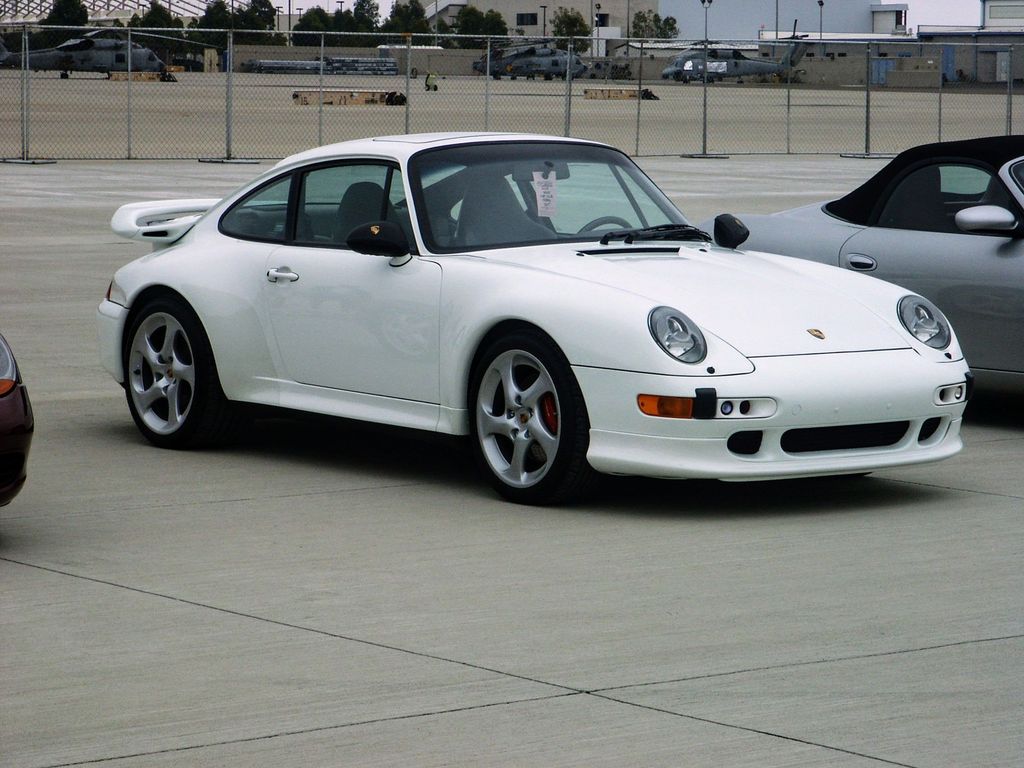
5. **Porsche 911 (993 Series)**For an entire generation of devout Porsche purists, the 993 generation of the 911, produced from 1994 to 1998, represented a bittersweet farewell: it marked the glorious, yet poignant, end of Porsche’s illustrious air-cooled era. This singular fact alone has bestowed upon these models a near-legendary, almost mythical, status in the automotive world, making them exceptionally coveted.
The 993 masterfully blended genuinely modern performance capabilities with the visceral, raw, and utterly mechanical charm of its signature air-cooled flat-six engine. It stands as a pivotal turning point in the storied 911 lineage, perfectly bridging the gap between classic Porsche tradition and progressive engineering. Values for these models have soared consistently, with particular emphasis on limited editions like the Carrera RS and low-production trims such as the Turbos and S models.
Today, pristine examples boasting impeccable documentation are meticulously tracked by global collectors, often exchanging hands for eye-watering sums. It is widely considered by many to be one of the most beautiful and mechanically engaging 911s ever crafted, truly embodying that perfect blend of timeless tradition and groundbreaking progression. If you were fortunate enough to own one of these and sold it for anything under six figures, you’re likely still kicking yourself, as these cars have become undeniable assets. Estimated collector value: $120,000 to $250,000 or more, depending on variant, with the Carrera RS and Turbo models frequently exceeding these impressive ranges.
Car Model Information: 1987 Porsche 911
Name: Porsche 911
Caption: The 1 millionth 911 produced on display at Volkswagen Group Forum, Berlin
Designer: Ferdinand Alexander Porsche
Manufacturer: Porsche
Production: September 1964 – present
Assembly: Stuttgart,Baden-Württemberg
Class: Sports car
BodyStyle: unbulleted list
Related: unbulleted list
Layout: Rear-engine design,rear-wheel drive
Predecessor: Porsche 356
Categories: 1970s cars, 1980s cars, 1990s cars, 2+2 coupés, 2000s cars
Summary: The Porsche 911 model series (pronounced Nine Eleven or in German: Neunelf) is a family of German two-door, high performance rear-engine sports cars, introduced in September 1964 by Porsche AG of Stuttgart, Germany. Now in its eighth generation, all 911s have a rear-mounted flat-six engine, and usually 2+2 seating, except for special 2-seater variants. Originally, 911s had air-cooled engines, and torsion bar suspension, but the 911 has been continuously enhanced, and evolved across generations. Though the 911 core concept has remained largely unchanged, water-cooled engines were introduced with the 996 series in 1998, and front and rear suspension have been replaced by Porsche-specific MacPherson suspension up front, and independent multi-link rear suspension.
The 911 has been raced extensively by private and factory teams, in a variety of classes. It is among the most successful competition cars. In the mid-1970s, the naturally aspirated 911 Carrera RSR won world championship races including Targa Florio and the 24 Hours of Daytona. The 911-derived 935 turbo also won the 24 Hours of Le Mans in 1979. Porsche won the World Championship for Makes in 1976, 1977, 1978, and 1979 with 911-derived models.
In a 1999 poll to determine the Car of the Century, the 911 ranked fifth — one of two in the top five that had remained continuously in production (the original Beetle remained in production until 2003). The one millionth example was manufactured in May 2017 and is in the company’s permanent collection.
Get more information about: Porsche 911
Buying a high-performing used car >>>
Brand: Porsche Model: 911
Price: $234,950 Mileage: 6,992 mi.
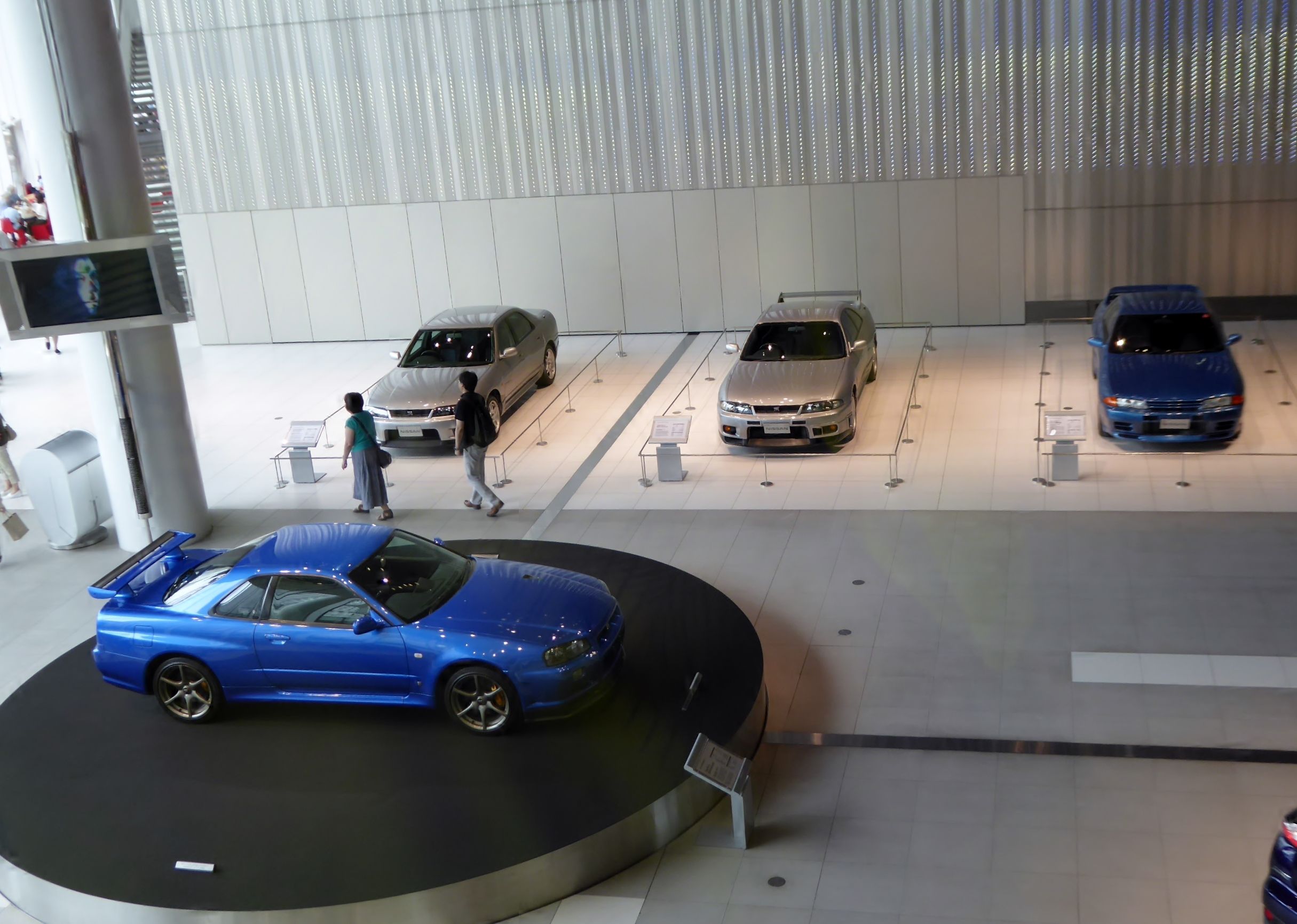
6. **Nissan Skyline GT-R (R32 and R33)**The Nissan Skyline GT-R undeniably earned its fearsome “Godzilla” global reputation through a relentless campaign of motorsport success, famously dominating Australian touring car racing, for example. The iconic nickname itself was originally coined by the astute Skyline enthusiast and journalist David Yu, who played a crucial role in spreading its popularity far beyond the borders of Japan during its initial reign. This car was a force of nature on the track.
As import restrictions, such as the much-dreaded 25-year rule in the US, have gradually eased, collector interest in the Skyline GT-R has surged dramatically in markets that previously had no legal access to these JDM titans. Authentic, well-documented models, especially those that have managed to avoid extensive modifications, are now exceptionally attractive propositions for discerning buyers worldwide. Collectors highly value its advanced all-wheel-drive technology, known as ATTESA E-TS, which provides incredible grip and stability.
Beneath its aggressive hood lies the potent RB26DETT twin-turbo inline-six engine, a legendary powerplant renowned for its tuning potential. Beyond its formidable engineering, the GT-R boasts an undeniable cultural legacy as both a gaming and tuning icon, further cementing its desirability. Its status as a true JDM legend ensures steady, strong long-term demand in the collector market, making it a wise investment for those looking to acquire a piece of automotive history. Estimated collector value: $55,000 to $120,000 depending on condition, mileage, and chassis generation, with R32 models being slightly more affordable than the rarer R33s in excellent condition.
Having celebrated the initial wave of ’90s powerhouses that ignited the collector market, we now delve deeper, venturing beyond the well-trodden paths to uncover the hidden gems and ultra-rare icons that are also profoundly shaping the collector boom. This isn’t just about raw power or universal recognition; it’s about engineering brilliance, historical significance, and a certain undefinable allure that elevates a vehicle from mere transport to a coveted piece of automotive art. These are the unsung heroes and the truly exclusive machines that round out the ’90s’ incredible legacy of appreciating assets.
Car Model Information: 2024 Hyundai PALISADE Calligraphy Night Edition
Name: Nissan Skyline GT-R
Caption: 2002 Nissan Skyline GT-R V·spec II (BNR34)
Manufacturer: Nissan
Production: unbulleted list
Assembly: unbulleted list
Class: Sports car
Related: unbulleted list
Transmission: unbulleted list
Predecessor: Nissan Skyline#BLRA-3 Skyline Sport
Successor: Nissan GT-R
Categories: 1970s cars, 1980s cars, 1990s cars, 2000s cars, 24 Hours of Le Mans race cars
Summary: The Nissan Skyline GT-R (Japanese: 日産・スカイラインGT-R, Hepburn: Nissan Sukairain GT-R) is a Japanese sports car based on the Nissan Skyline range. The first cars named “Skyline GT-R” were produced between 1969 and 1972 under the model code KPGC10, and were successful in Japanese touring car racing events. This model was followed by a brief production run of second-generation cars, under model code KPGC110, in 1973.
After a 16-year hiatus, the GT-R name was revived in 1989 as the BNR32 (“R32”) Skyline GT-R. Group A specification versions of the R32 GT-R were used to win the Japanese Touring Car Championship for four years in a row. The R32 GT-R also had success in the Australian Touring Car Championship, with Jim Richards using it to win the championship in 1991 and Mark Skaife doing the same in 1992, until a regulation change excluded the GT-R in 1993. The technology and performance of the R32 GT-R prompted the Australian motoring publication Wheels to nickname the GT-R “Godzilla” in its July 1989 edition. Wheels then carried the name through all the generations of Skyline GT-Rs, most notably the R34 GT-R, which they nicknamed “Godzilla Returns”, and described as “The best handling car we have ever driven”. In tests conducted by automotive publications, R34 GT-R have covered a quarter of a mile (402 metres) in 12.2 seconds from a standing start time and accelerated from 0–100 km/h (0–62 mph) in 4.4 seconds.
The Skyline GT-R became the flagship of Nissan performance, showing many advanced technologies including the ATTESA E-TS all-wheel drive system and the Super-HICAS four-wheel steering. Today, the car is popular for import drag racing, circuit track, time attack and events hosted by tuning magazines. Production of the Skyline GT-R ended in August 2002. The car was replaced by the GT-R (R35), an all-new vehicle based on an enhanced version of the Skyline V36 platform. Although visibly different, the two vehicles share similar design features and are manufactured in the same factory.
The Skyline GT-R was never manufactured outside Japan, and the sole export markets were Hong Kong, Singapore, Australia and New Zealand, in 1991, and the UK (in 1997, due to the Single Vehicle Approval scheme). They are also popular across the world as used Japanese imports.
Despite this, the Skyline GT-R has become an iconic sports car as a grey import vehicle in the Western world (mainly the United Kingdom, Australia, New Zealand, South Africa, Ireland, Canada, and the United States). It has become notable through pop culture such as The Fast and the Furious, Initial D, Shakotan Boogie, Tokyo Xtreme Racer, Wangan Midnight, Need for Speed, Forza, Driving Emotion Type-S, Test Drive, and Gran Turismo.
In 2019, Nismo announced that it would resume production of spare parts for all generations of the Skyline GT-R, including body panels and engines.
Get more information about: Nissan Skyline GT-R
Buying a high-performing used car >>>
Brand: Nissan Model: Skyline GT-R
Price: $39,658 Mileage: 22,633 mi.
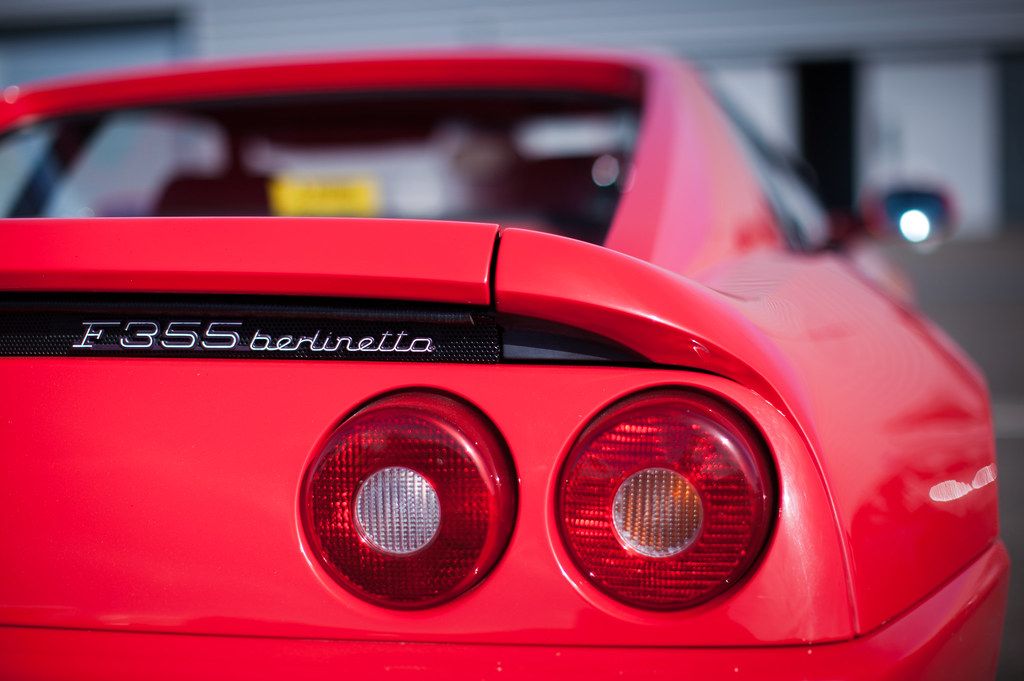
7. **Ferrari F355**The Ferrari F355 truly marked a pivotal moment for the Prancing Horse, ushering in an era where modern refinement and genuine usability began to intertwine with exhilarating performance. It struck a groundbreaking balance, moving beyond the often temperamental nature of its predecessors to offer a more approachable, yet still utterly captivating, driving experience. At its heart was a high-revving, howling 3.5-liter V8 engine, an auditory masterpiece thanks to its unique five valves per cylinder design – a technical flourish that appealed directly to the purist.
Its appeal among enthusiasts today often centers around its iconic gated manual transmission, a tactile and visceral connection to the machine increasingly rare in modern supercars. However, its limited production numbers and the often-joked-about “Ferrari tax” for maintenance costs have created a divide between those who drive it and those who invest. A meticulous service history is absolutely essential for achieving top value.
The F355’s critical place in Ferrari’s transition from analog purity to the digital age significantly bolsters its collectible status. It represents the perfect bridge, offering classic exotic charm without fully embracing modern electronic complexities. Discerning collectors recognize its profound importance, with manual-transmission Berlinettas and Spiders consistently commanding top prices, reinforcing its desirability as a sound investment. Estimated collector value: $90,000 to $160,000, with manual-transmission Berlinettas and Spiders fetching the highest prices.
Car Model Information: 1998 Ferrari F355 GTS
Name: Ferrari F355
Caption: Ferrari F355 Berlinetta
Manufacturer: Ferrari
Aka: Ferrari 355 F1
ModelYears: 1995–1999
Production: May 1994–1999
Assembly: Maranello
Predecessor: Ferrari 348
Successor: Ferrari 360
Class: Sports car
BodyStyle: berlinetta,targa top,convertible (car)
Layout: Longitudinal engine,Rear mid-engine, rear-wheel drive layout
Engine: multivalve,Ferrari Dino engine#3.5,V8 engine
Transmission: manual transmission,automated manual transmission
Wheelbase: cvt
Length: cvt
Width: cvt
Height: cvt
Weight: cvt
Designer: Pininfarina
Sp: uk
Categories: All articles needing additional references, All articles with dead external links, All articles with unsourced statements, Articles needing additional references from July 2020, Articles with dead external links from April 2024
Summary: The Ferrari F355 (Type F129) is a sports car manufactured by Italian car manufacturer Ferrari produced from May 1994 until 1999. The car is a heavily revised Ferrari 348 with notable exterior and performance changes. The F355 was succeeded by the all-new Ferrari 360 in 1999.
Design emphasis for the F355 was placed on significantly improved performance, as well as drivability across a wider range of speeds and in different environments (such as low-speed city traffic).
Get more information about: Ferrari F355
Buying a high-performing used car >>>
Brand: Ferrari Model: F355
Price: $144,991 Mileage: 39,074 mi.
Read more about: 25 Years Old: Which Cars Deserve An Antique Plate (And Which Are Just Old Junk)?

8. **Toyota Land Cruiser FZJ80**You might wonder what a utilitarian SUV is doing among Italian exotics and Japanese performance titans. But the Toyota Land Cruiser FZJ80, produced from 1990 to 1997, is no ordinary SUV. It’s universally revered for its legendary build quality, tank-like durability, and genuine, uncompromising off-road capability, especially when equipped with those coveted factory lockers. This ’80 Series’ has earned a fanatical following among adventure vehicle collectors and discerning enthusiasts who understand true value isn’t always about speed.
Many of these rugged machines have high mileage, a testament to their reliability. This extensive use, however, makes truly well-kept, original examples with minimal rust incredibly rare and desirable. Collectors actively seek out models with factory-locking differentials and complete, documented service history to ensure mechanical integrity. Its unshakeable reliability and timeless, rugged design continue to fuel strong interest, proving practical excellence can also be profoundly collectible.
Global demand for the FZJ80 continues its steady upward trajectory, driven by passionate overland adventurers and classic SUV buyers. The later 1FZ-FE 4.5L inline-six engine, available from 1993 to 1997, is particularly preferred for its enhanced power and legendary reliability, cementing its status as an appreciating asset that redefines automotive fortune. Estimated collector value: $30,000 to $70,000, with high-spec models in excellent condition occasionally exceeding that range.
Car Model Information: 2024 Hyundai PALISADE Calligraphy Night Edition
Name: Toyota Land Cruiser
Caption: 2021 Toyota Land Cruiser ZX (VJA300, Colombia)
Manufacturer: Toyota
Production: 1951–present
Class: unbulleted list
Layout: Front-engine, four-wheel-drive
Categories: 1960s cars, 1970s cars, 1980s cars, 1990s cars, 2000s cars
Summary: The Toyota Land Cruiser (Japanese: トヨタ・ランドクルーザー, Hepburn: Toyota Rando-Kurūzā), also sometimes spelt as LandCruiser, is a series of four-wheel drive vehicles produced by the Japanese automobile manufacturer Toyota. It is Toyota’s longest running series of models. As of 2019, the sales of the Land Cruiser totalled more than 10 million units worldwide.
Production of the first generation of the Land Cruiser began in 1951. The Land Cruiser has been produced in convertible, hardtop, station wagon and cab chassis body styles. The Land Cruiser’s reliability and longevity have led to huge popularity, especially in Australia, where it is the best-selling body-on-frame, four-wheel drive vehicle. Toyota also extensively tests the Land Cruiser in the Australian outback – considered to be one of the toughest operating environments in both temperature and terrain. In Japan, the Land Cruiser was once exclusive to Toyota Japanese dealerships called Toyota Store.
Since 1990, the smaller variation of the Land Cruiser has been marketed as the Land Cruiser Prado. Described as a ‘light-duty’ version of the Land Cruiser by Toyota, it features a different design compared to the full-size model and, up until 2023, it remains the only comfort-oriented Land Cruiser available with a short-wheelbase 3-door version.
As of 2023, the full-size Land Cruiser was available in many markets. Exceptions include the United States (since 2021 where the smaller Land Cruiser Prado has been sold under the Land Cruiser name since 2024), Canada (since 1996), Malaysia (which receives the Lexus LX instead), Hong Kong, Macau, South Korea, Brazil, and most of Europe. In Europe, the only countries where the full-size Land Cruiser is officially sold are Gibraltar, Moldova, Russia, Belarus, and Ukraine. The Land Cruiser is hugely popular in the Middle East, Russia, Australia, India, Bangladesh, Pakistan, New Caledonia, and Africa. It is used by farmers, the construction industry, non-governmental and humanitarian organizations, the United Nations, national armies (often the pickup version), and irregular armed groups who turn them into “technicals” by mounting machine guns in the rear. In August 2019, cumulative global sales of the Land Cruiser family surpassed 10 million units.
Get more information about: Toyota Land Cruiser
Buying a high-performing used car >>>
Brand: Toyota Model: Land Cruiser FZJ80
Price: $39,658 Mileage: 22,633 mi.
Read more about: See Joe Rogan’s Incredible Car Collection: Rare, Custom, and High-Performance Vehicles
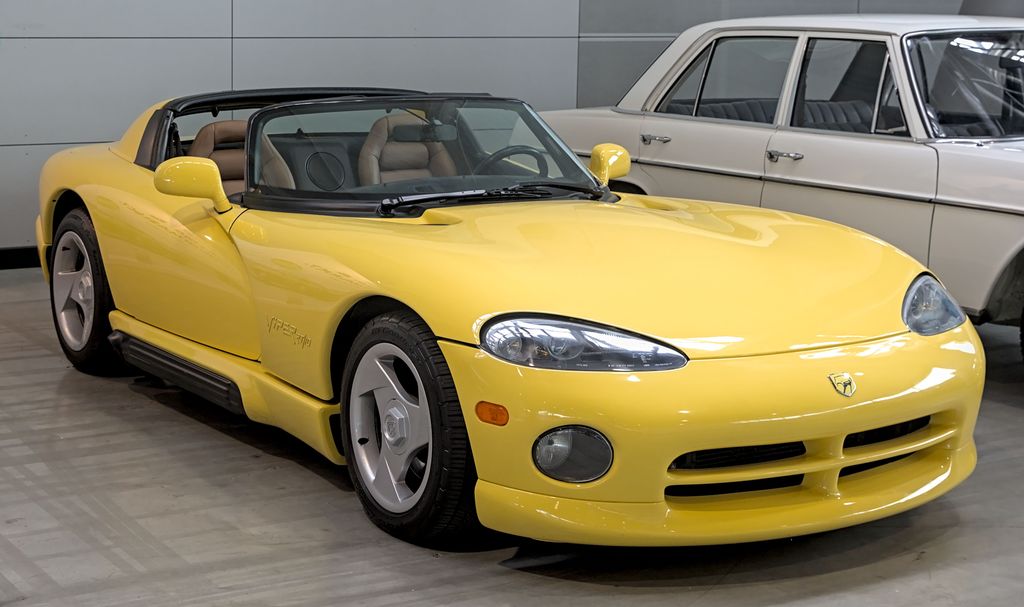
9. **Dodge Viper RT/10**If one car in the 1990s screamed “America!” with an unapologetic, ear-splitting roar, it was the original Dodge Viper RT/10, produced from 1992 to 1995. This machine brought raw, unadulterated performance to the road in the most visceral way possible, quickly earning a notorious reputation as the “Widowmaker.” Its very low production numbers, especially in early years, coupled with notoriously minimal driver aids—no ABS, no traction control, just you and that monstrous V10—give it an enduring, mythical appeal among purists craving an unfiltered driving experience.
The earliest models of the RT/10 are universally considered the most collectible due to their absolute purity, stark simplicity, and direct connection to the original concept car. Finding survivors in original condition has become increasingly difficult, particularly those with a clean ownership history and the infamous original side pipes that looked like they could melt tarmac. This truly American icon has firmly established itself as a beloved fixture in U.S.-based collector circles, a roaring symbol of American excess done right.
This car demands respect. It’s often said, perhaps half-jokingly, that this car is “out to kill you,” a testament to its raw, untamed nature. Its appeal lies precisely in that character, attracting collectors who value a direct, unmediated connection with a truly powerful machine. Its values continue to climb as the market recognizes its unique place in American automotive history. Estimated collector value: $55,000 to $90,000, with early 1992 production units commanding a premium.
Car Model Information: 2024 Hyundai PALISADE Calligraphy Night Edition
Name: Dodge Viper (SR II)
Caption: 1996 Dodge Viper GTS
Aka: Chrysler Viper (Europe)
Production: 1995–2002
ModelYears: 1996–2002
Assembly: Conner Avenue Assembly,Detroit,Michigan
Designer: Tom Gale (designer)
Class: Sports car
BodyStyle: liftback,roadster (automobile)
Engine: Viper engine#First generation,V10 engine
Powerout: RT/10 (1996–1997): {{convert,415,hp,kW PS,0,abbr=on
Abbr: on
Transmission: BorgWarner
Wheelbase: 2446 mm
Length: RT/10: {{convert,4450,mm,in,1,abbr=on
Width: 1920 mm
Height: RT/10: {{convert,1120,mm,in,1,abbr=on
Weight: RT/10: {{convert,1505,kg,lbs,abbr=on,0
Predecessor: Dodge Viper (SR I)
Successor: Dodge Viper (ZB I)
Categories: Articles with short description, Cars discontinued in 2002, Cars introduced in 1995, Dodge vehicles, Short description with empty Wikidata description
Summary: The Dodge Viper (SR II) is the second-generation Dodge Viper sports car, manufactured by American automobile manufacturer Dodge. Two versions of the Viper were produced during the second generation. The RT/10, which had many parts carried over from the previous generation during the initial year of production and a new coupe named the GTS which was introduced in mid-1996.
Get more information about: Dodge Viper (SR II)
Buying a high-performing used car >>>
Brand: Dodge Model: Viper RT/10
Price: $39,658 Mileage: 22,633 mi.
Read more about: 10 Iconic Chrysler Concepts and Classics That Deserve a Comeback
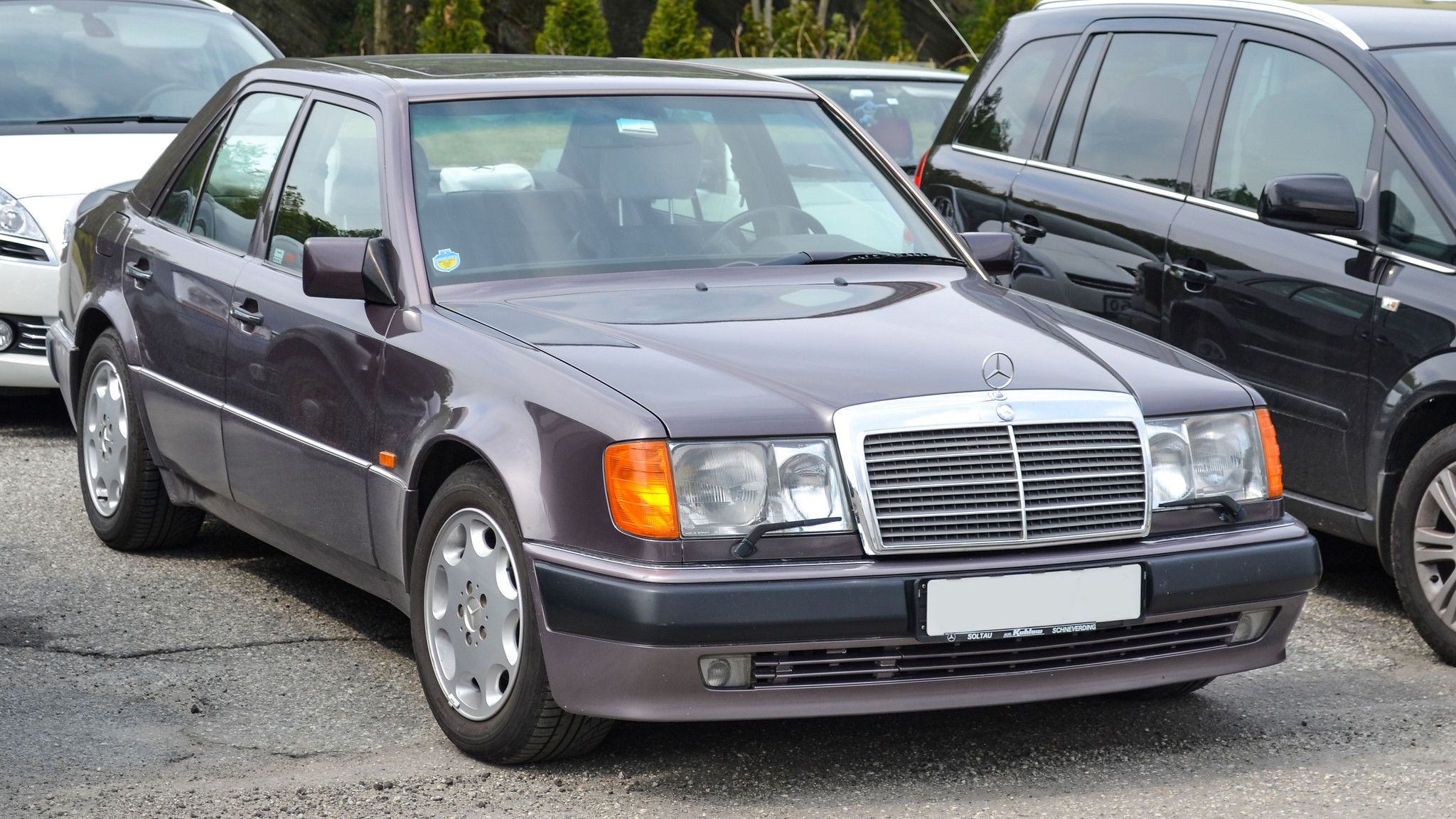
10. **Mercedes-Benz 500E**Ah, the Mercedes-Benz 500E, later known as the E500, produced from 1991 to 1994. For those in the know, this is a true connoisseur’s car, a legendary “sleeper” embodying staggering performance wrapped in the most understated executive styling. What truly elevates this machine into legend is its extraordinary origin: it was built in an unprecedented partnership with Porsche, who actually hand-assembled these powerful sedans at their Zuffenhausen plant.
The 500E was designed to devour autobahns and embarrass bona fide sports cars, all while looking like a regular, albeit very handsome, E-Class. This limited production, painstaking hand assembly (only 1,500 units were sent to the United States), and fascinating backstory make it a true standout among ’90s sedans, a testament to engineering prowess given free rein. Discerning collectors seek well-preserved examples with comprehensive documentation, especially those avoiding the notorious biodegradable wiring harness issues.
Its understated design, combined with an incredible engineering narrative, has fostered a devout cult following. Values for the 500E have seen a quiet but remarkably steady increase, as more collectors recognize its unique pedigree and profound historical significance. It’s a car that truly rewards those who appreciate subtlety, engineering depth, and a discreet, yet absolutely devastating, turn of speed. Estimated collector value: $45,000 to $85,000, depending on originality, mileage, and factory options.
Read more about: Major Car Brands Join Tesla’s NACS Revolution: What Supercharger Access Means for EV Owners.
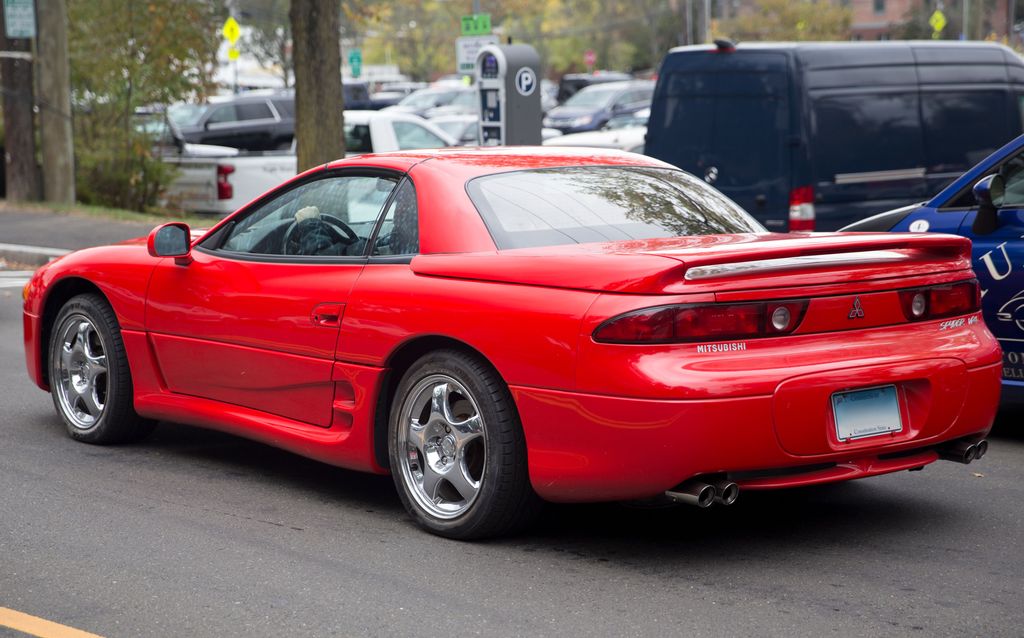
11. **Mitsubishi 3000GT VR-4**The Mitsubishi 3000GT VR-4, along with its equally impressive Dodge Stealth R/T twin, stood as a technological tour de force for its time. This grand touring coupe offered a dizzying array of cutting-edge features that were rarely, if ever, seen together in one package: twin turbos, all-wheel drive, four-wheel steering, active aerodynamics with pop-up spoilers and active front air dams, and even an active exhaust system. It was a veritable showcase of what Japanese engineering could achieve in the ’90s.
Unfortunately, many of these incredibly complex cars were used hard or extensively modified by eager enthusiasts, which, while testament to their appeal, has left remarkably few clean, original examples remaining today. This scarcity, however, only fuels the collector market, as discerning buyers now actively seek out original-condition cars, especially those with lower mileage and complete service records to ensure all those intricate systems are still functioning as intended. Its reputation as a technical showcase and its unique place in the pantheon of ’90s Japanese performance cars have made it increasingly appealing.
Interest in the 3000GT VR-4 has been steadily growing in recent years, proving that complexity, when executed well, is indeed appreciated by the collector community. It’s a fascinating example of an overlooked model from the era now finding its moment in the sun. Interestingly, the 3000GT VR-4 was even considered for a role in the original *The Fast and the Furious* movie, but ultimately wasn’t chosen. This, however, might be a hidden blessing for astute collectors, as it means you still have a chance to snag this technological marvel before its price potentially hikes up even further. Estimated collector value: $30,000 to $60,000, with premium prices for unmodified early models with active aero still functioning.
Car Model Information: 2024 Hyundai PALISADE Calligraphy Night Edition
Caption: Mitsubishi 3000GT
Name: Mitsubishi 3000GT (Z15A/Z16A)
Aka: Mitsubishi GTO (Japan),Dodge Stealth
Manufacturer: Mitsubishi Motors
Assembly: Okazaki, Aichi
Production: unbulleted list
Predecessor: Mitsubishi Starion
Class: unbulleted list
Platform: unbulleted list
Related: Mitsubishi Diamante,Mitsubishi Sigma
BodyStyle: ubl
Engine: unbulleted list
Transmission: unbulleted list
Wheelbase: 2470 mm
Abbr: on VR-4 Spyder
Length: 4600 mm
Width: 1840 mm
Height: 1285 mm
Weight: {{convert,3131,lb,kg,0,abbr=on
Layout: Transverse engine,front-engine,front-wheel drive
Designer: Masaru Suzuki (1987)
Categories: 2000s cars, All-wheel-drive vehicles, Articles with short description, CS1 German-language sources (de), CS1 Japanese-language sources (ja)
Summary: The Mitsubishi 3000GT is a front-engine, all-wheel/front-wheel drive grand touring/sports car manufactured and marketed by Mitsubishi from 1990 until 2000 over three different series. Manufactured in a three-door hatchback coupé body style in Nagoya, Japan, the 2+2 four-seaters were marketed in the Japanese domestic market as the GTO, and globally as 3000GT. In North America, it was sold both as the Mitsubishi 3000GT (1991–1999) and the Dodge Stealth (1991–1996), a badge engineered, mechanically identical captive import. As a collaborative effort between Chrysler and Mitsubishi Motors, Chrysler was responsible for the Stealth’s exterior styling.
The car was based on Mitsubishi’s Sigma/Diamante and retained their transverse mounted 3-liter, 24-valve V6 engines and front-wheel-drive layout. The GTO’s engines were naturally aspirated or with twin-turbochargers and were also available with active aerodynamics (automatically adjusting front and rear spoilers), four-wheel-steering, full-time all-wheel-drive and adaptive suspension.
Mitsubishi marketed a retractable hardtop variant, which were engineered and converted from coupé models in California by ASC, and sold as the GT Spyder or VR4 Spyder for model years 1993–1995. These were the first fully automated retractable hardtop marketed since the 1959 Ford Skyliner.
The JDM model took its name from the Galant GTO, a two-door hardtop coupé marketed by the company in the early 1970s, which in turn took its name from the Ferrari 250 GTO, short for Gran Turismo Omologata – “Omologata” signifying that it met motorsport homologation requirements.
Get more information about: Mitsubishi 3000GT
Buying a high-performing used car >>>
Brand: Mitsubishi Model: 3000GT VR-4
Price: $39,658 Mileage: 22,633 mi.

12. **Subaru Impreza 22B STI**At first glance, seeing a Subaru on a list of cars now worth a fortune, particularly at such a stratospheric value, might raise an eyebrow. But for those deep in the know, the Subaru Impreza 22B STI is not just any Subaru; it’s the absolute equivalent of automotive royalty, the undisputed holy grail of Subaru’s legendary rally heritage. This beast was purpose-built, a true homologation special, designed to celebrate the brand’s incredible hat-trick of World Rally Championship manufacturer titles from 1995-1997 and Subaru’s 40th anniversary. It combined outrageously aggressive, wide-body styling – a full 100mm wider than a standard WRX! – with an almost impossibly limited production run: only 400 units for Japan, plus a mere 24 for export markets and a handful of prototypes.
This car’s direct motorsport connection, its meticulously hand-built details, and its extreme scarcity have collectively transformed it into one of the most desirable and, indeed, one of the most expensive performance cars of the entire 1990s. Unlike many of its contemporaries that chased brute straight-line speed, the 22B was engineered with a surgical focus on balance, grip, and responsiveness, making it a weapon on any road, regardless of conditions. It is now firmly established as a bona fide crown jewel among JDM collectors, fetching prices that would undoubtedly make a new Porsche owner blush with envy.
The driving experience in a 22B is legendary, offering an intoxicating blend of turbo surge, symmetrical all-wheel-drive grip, and a chassis that communicates every nuance of the road. Its value isn’t just a testament to rarity; it’s a recognition of its singular place in automotive history as a genuine, track-proven champion. For serious enthusiasts and investors, the 22B represents an unparalleled opportunity to own a piece of rally history, a car whose legend only grows with each passing year. Estimated collector value: $200,000 to $300,000, with auction prices steadily climbing for low-mileage, original-condition examples.
Car Model Information: 2024 Hyundai PALISADE Calligraphy Night Edition
Name: Subaru Impreza
Caption: 2024 Subaru Impreza hatchback (GU)
Manufacturer: Subaru
Production: 1992–present
Predecessor: Subaru Leone
Successor: Subaru WRX
Class: Compact car
BodyStyle: coupe
Layout: Front-engine, front-wheel drive layout
Categories: 2000s cars, 2010s cars, 2020s cars, All-wheel-drive vehicles, All Wikipedia articles written in American English
Summary: The Subaru Impreza (Japanese: スバル・インプレッサ, Hepburn: Subaru Inpuressa) is a compact car that has been manufactured by the Japanese automaker Subaru since 1992. It was introduced as a replacement for the Leone, with the predecessor’s EA series engines replaced by the new EJ series. It is now in its sixth generation.
Subaru has offered a 5-door hatchback body variant since 2008. The firm also offered a coupé from 1995 until 2001, a 4-door sedan up to the fifth generation, and a 5-door wagon from the Impreza’s introduction which was replaced by a hatchback with the third generation in 2008. Mainstream versions have received “boxer” flat-four engines ranging from 1.5- to 2.5-liters, with the performance-oriented Impreza WRX and WRX STI models upgraded with the addition of turbochargers. Since the third generation series, some markets have adopted the abbreviated Subaru WRX name for these high-performance variants. The first three generations of Impreza were also available with an off-road appearance non-SUV package called the Outback Sport, exclusive to the North American market. For the fourth generation, this appearance package was raised up to be subcompact crossover SUV and renamed the XV (Crosstrek in North America), and is sold internationally. Colloquially, the car is sometimes referred to as Scooby.
Subaru has offered front- and all-wheel drive layouts for the Impreza. Since the late-1990s, some markets have restricted sales to the all-wheel drive model, putting the Impreza in a unique selling proposition in the global compact class, which is usually characterized by front-wheel drive. Japanese models remain available in both configurations.
A 2019 iSeeCars study named the Impreza as the lowest-depreciating sedan in the United States after five years.
Get more information about: Subaru Impreza
Buying a high-performing used car >>>
Brand: Subaru Model: Impreza 22B STI
Price: $39,658 Mileage: 22,633 mi.

13. **Honda Integra Type R**The Honda Integra Type R, particularly the DC2 chassis produced from 1995 to 2001 (and hitting US shores from 1997-2001), stands as an enduring testament to Honda’s unparalleled engineering prowess and its unwavering commitment to pure, unadulterated driver enjoyment. This lightweight, high-revving front-wheel-drive coupe was never about flashy numbers or boastful horsepower figures; it was built with a laser-like focus and singular intent: to deliver a driving experience that earned universal respect from critics and drivers alike. It redefined what a front-wheel-drive car could truly achieve.
To achieve its remarkable performance, the Integra Type R was meticulously stripped of unnecessary weight, its chassis was stiffened for ultimate responsiveness, and it was blessed with the truly legendary B18C5 VTEC engine. This naturally aspirated 1.8-liter powerplant delivered a jaw-dropping 195 horsepower without the aid of a turbo, screaming all the way to its redline with an intoxicating mechanical crescendo. North American production numbers were notably limited, making surviving examples – especially those thankfully unmodified – increasingly challenging to find today, adding to their allure and value.
Enthusiasts and collectors alike are now eagerly seeking out stock cars with matching numbers and impeccably clean service histories, understanding that originality is paramount for this purist’s machine. Its raw performance legacy, surgical handling, and relative rarity all contribute to its serious long-term collectibility. The Integra Type R continues to gain widespread recognition as one of the finest driver’s cars of its time, definitively proving that front-wheel drive, when engineered with such passion and precision, can indeed be an absolute riot. If you’re looking for the ultimate collector’s piece, prepare to pay a premium for a Type R in the iconic Championship White paint, as this is the color most intimately associated with its legendary status. Estimated collector value: $50,000 to $90,000, with top-tier examples showing rapid year-over-year appreciation.
Closing the Garage: What the ’90s Left Behind
Car Model Information: 2024 Hyundai PALISADE Calligraphy Night Edition
Name: Honda Integra
Caption: 2002 Honda Integra Special Edition coupe (DC5) in Australia.
Aka: Honda Civic (eleventh generation)
Manufacturer: Honda
Production: proper name
ModelYears: 1986–2006,2023–present
Assembly: Suzuka, Mie
Class: Compact car
BodyStyle: liftback,coupé
Layout: Front-engine, front-wheel-drive layout,Front-engine, four-wheel-drive layout
Predecessor: Honda Quint
Successor: ubl
Categories: 1990s cars, 2000s cars, 2020s cars, All articles with unsourced statements, All articles with vague or ambiguous time
Summary: The Honda Integra (Japanese: ホンダ インテグラ, Hepburn: Honda Integura), sold in North America as the Acura Integra and later the Acura RSX, is an automobile produced by the Japanese company Honda from 1985 until 2006, and then since 2021. It succeeded the Quint as a more luxurious and sport-oriented derivative of the Civic. The Integra was one of the launch models for Acura in the US in 1986 alongside the Acura Legend. Throughout its production run, the Integra was highly regarded for its handling and performance. The 1995–2001 Integra Type R is widely regarded as one of the best front-wheel-drive cars of all time.
The Integra nameplate was revived in 2021 after a 16-year hiatus. The Honda Integra nameplate is used for a restyled Honda Civic sedan for the Chinese market, while the Acura Integra nameplate is used for a Civic-based liftback for North America, replacing the Acura ILX.
Get more information about: Honda Integra
Buying a high-performing used car >>>
Brand: Honda Model: Integra Type R
Price: $39,658 Mileage: 22,633 mi.
Read more about: From Muted Roars to Touchscreen Torment: Unpacking the Most Annoying Trends Dominating Today’s Auto Industry
As we close the garage doors on this incredible journey through the 1990s, it’s clear that this decade produced a wave of cars now seen in a brilliant, almost dazzling, new light. These aren’t just vehicles; they are time capsules, their rising values reflecting both a shrinking supply of original examples and an enduring, almost magnetic appeal. They draw in enthusiasts who remember them fondly from glossy magazine pages and arcades, alongside a new wave of fans discovering their magic for the very first time. With demand on a relentless ascent and nostalgia running in full, glorious swing, these cars have transcended the simple label of “collectibles.” They are bona fide cultural milestones, with stories still unfolding one exhilarating auction at a time. So, if you’re fortunate enough to have one of these automotive treasures sitting quietly in your garage, congratulations – it might just be your golden ticket. If not, perhaps it’s time to check the classifieds before the next blockbuster movie or game franchise further ignites prices into the stratosphere.


